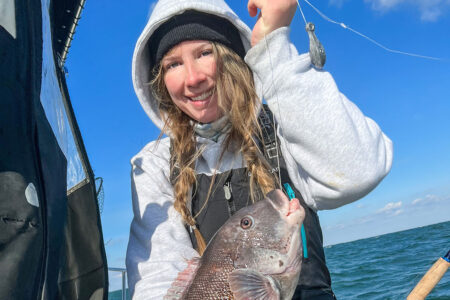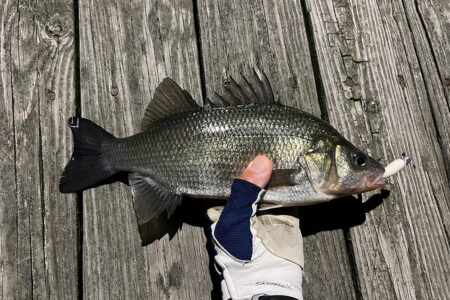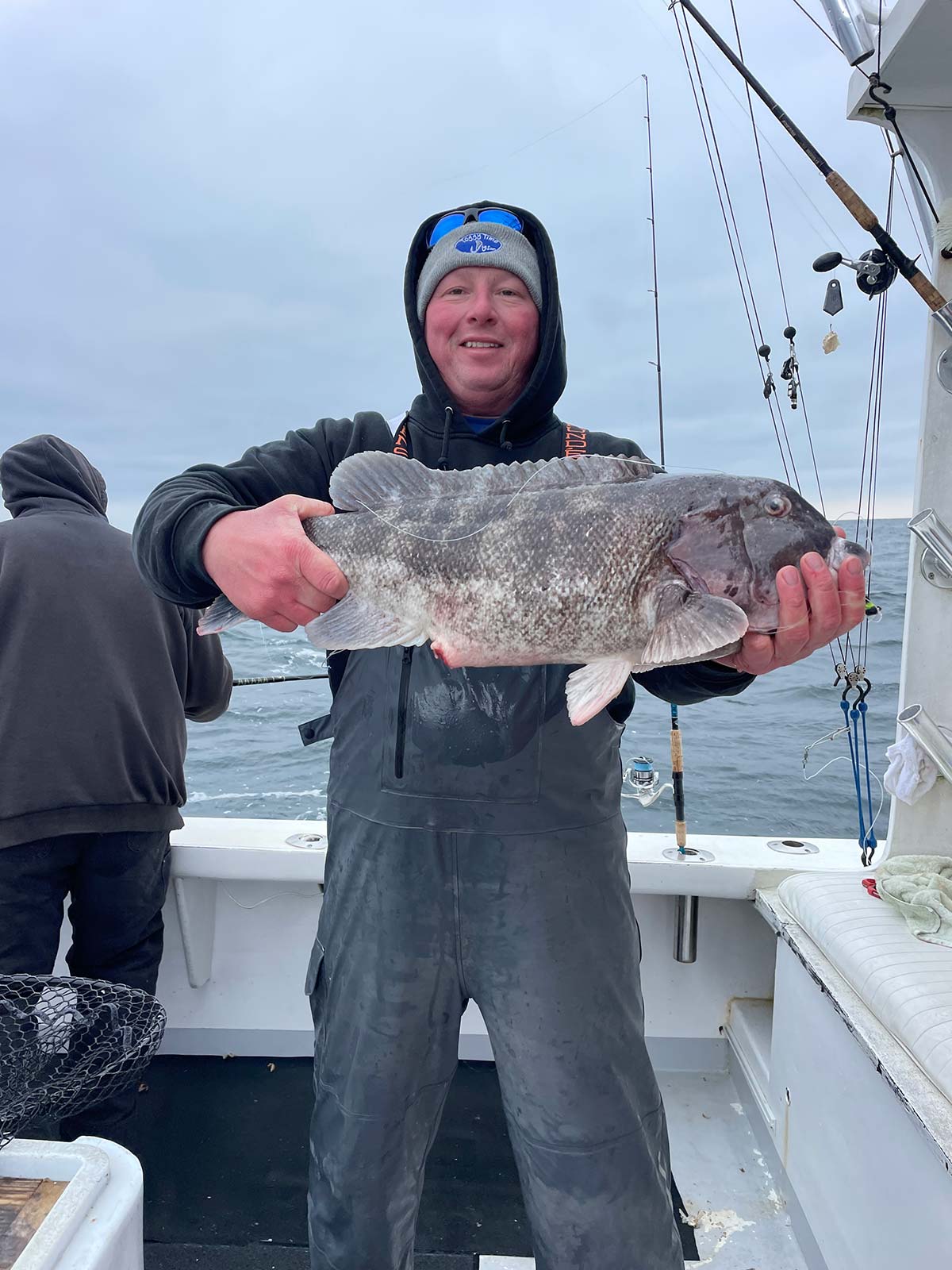
It’s only “over” for a month; so cheer up, gear up and prepare for April togging!
As I write this, my last scheduled blackfish charter in New Jersey was yesterday; my car and my garage smells of aging white leggers.
The last boats will be getting hauled out of the water in Cape May and Pt. Pleasant in the next few days, so it’s pretty much time to wrap things up. While the first quarter of this year’s tautog fishery officially ends at the end of February, many captains had already opted to lay up for the winter to get maintenance done to the boats.
My clothes, boots, and rods are a nasty smelly pile of neglected gear as well! So this morning I woke up and began the process of preparing for my next charter dates in April. From my clothes to my tackle bag, rods and reels, everything needs a high level of attention. My gear has been collected over the years. My own style of fishing dictates which tools I have grown fond of using and they would be hard to replace. With proper care, most will last for years and years, until I slip, and my scissors go over the side, in which case I’m glad I have spares at home. I take good care of my equipment.
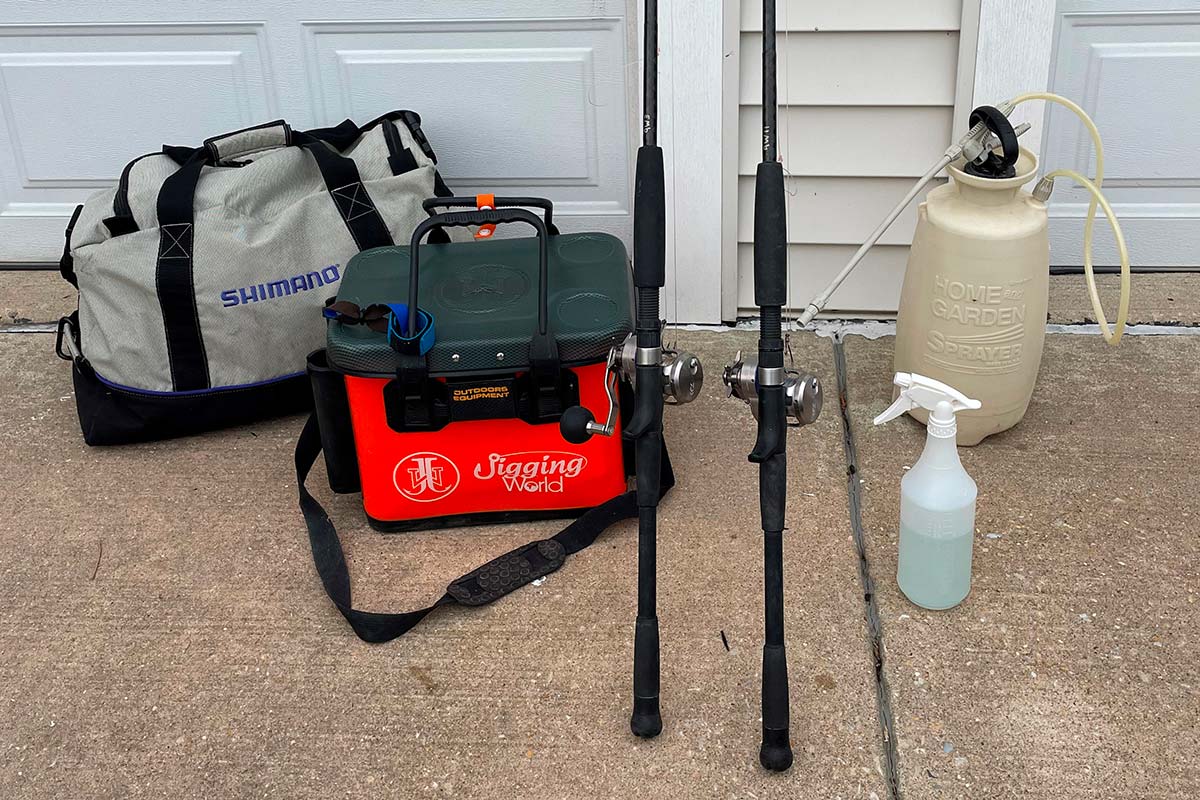
Clean Now, Fish Later
So I’ve been going through the gear bag, right after scrubbing my boots clean (especially the soles where I’ve been stepping on crabs for the past couple of months). It takes time to clean the crab guts and shells out of the grooves, but it needs to be done. Gruden’s bibs and jackets all get washed and hung to dry. Inside out first, then when they are completely dry, I turn them outside out and let them dry completely. All get packed up back in my bag and are now ready for my next trip.
I add a small amount of bleach to the wash water to prevent bacteria growth in the canvas inside of the outerwear. Hats, gloves, handkerchiefs, bait rags all cleaned, dried, and stored in their place. With all my cloths and needed accessories stored and ready, I am ready to go on my next trip in moment’s notice. One year I left my bibs in my bag for maybe a month. When I went to put them on, they stunk and were stuck together. Pink slime had grown on the canvas inner layer. I fished without bibs that day. I’ve forgotten green crabs in my jacket pocket for a few weeks. What’s that smell? No idea?
Next up to be cared for is my actual fishing clothes; long johns, shirts, jeans, socks and liners, my hoodie, even my UGG shoes that slip on and off over my heavy wool socks get stored in a clothes box in my closet. If I don’t keep every piece of gear together, something will go missing. I will leave my socks at the shore house, or I can’t find my UGG shoes, then I’m all screwed up putting sneakers over two pairs of heavy socks; come on now, I know better.
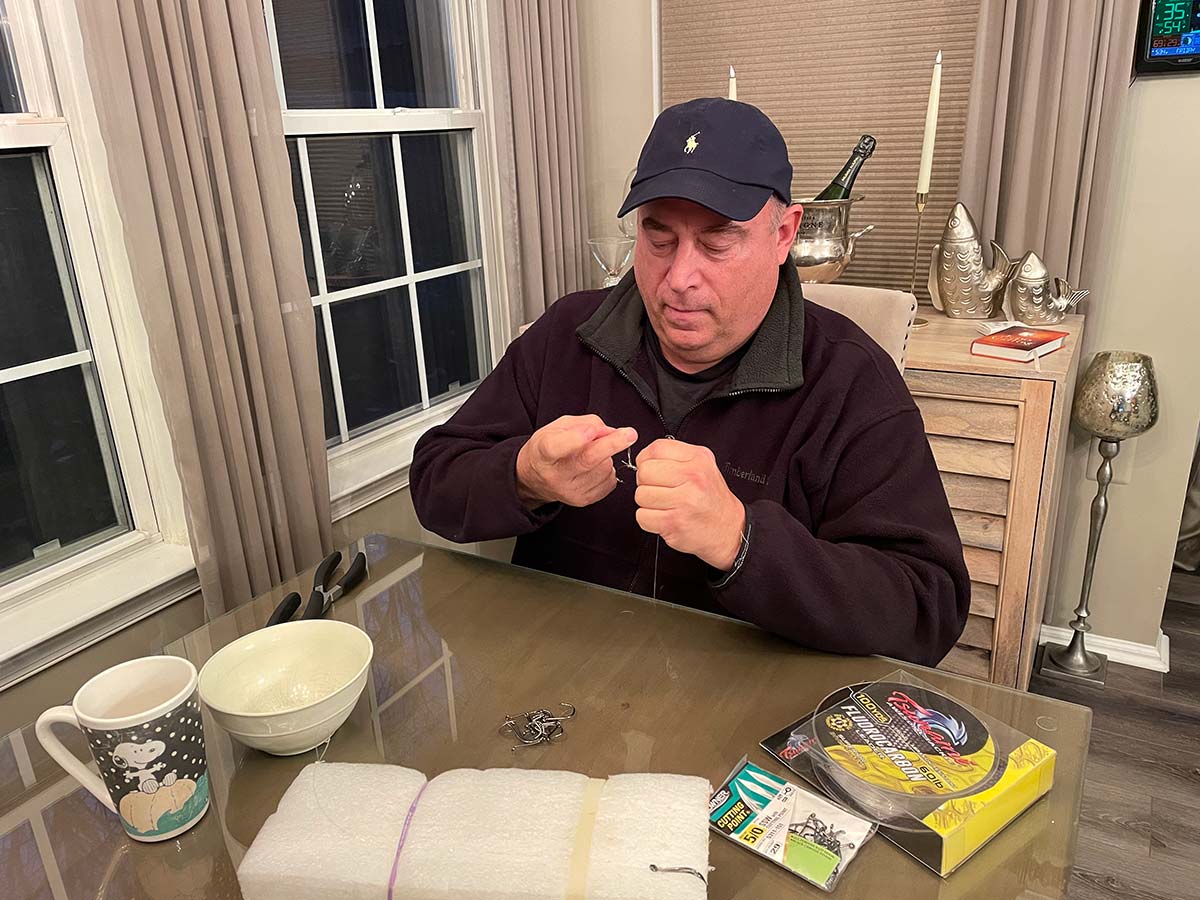
Rods, reels, and tackle bag all need some big love after a long season of back-to-back trips. Water was turned off at the marinas after Thanksgiving. Around this same time, we winterize our homes and drain our garden hoses, so we can’t clean our gear as easily as we did back in the early fall. Togging is a notoriously messy type of fishing. Rods and reels get filthy after every trip. When I arrive home after a long day at the rail, I stand my rods in my driveway against my house for a little winter clean up. I use a spray bottle of Salt-X solution and give the outfits a solid soaking. I then use a pump-up pressure sprayer filled with clean water to give them a thorough rinsing.
Hung while still wet on their rack to dry inside of my garage, I can now go inside for a shower and some dinner and my gear has been somewhat cared for. In a few days I will carefully wipe them down, tie on new top shots and put the reel covers on. The reels will get a drop of oil where they should every so often, as they will go for service after my spring season. They are ready for their next trip. As a bonus stop by the car wash and use your own vacuum and check every corner for a nasty surprise.
My tackle tote gets a good solid cleaning inside and out. From sitting on deck for many trips, it’s been sitting in crab juice for way too long. Scissors and hook remover inside get a good scrubbing and maybe run through the dish washer. Since the water has been turned off, it has become difficult to keep my gear respectfully clean. Normally we wash the rods and reels with fresh water at the dock when we get off the boat, but winter fishing has its challenges. Now it’s time to catch up on gear cleaning, prep, and maintenance. Whether gear is very expensive, or simply has a sentimental place in our bag, we don’t want to replace stuff until we are ready to. Restock my sinkers and all that is needed is some more slider rigs and I’m ready to step on deck to hunt for some big tog once again.
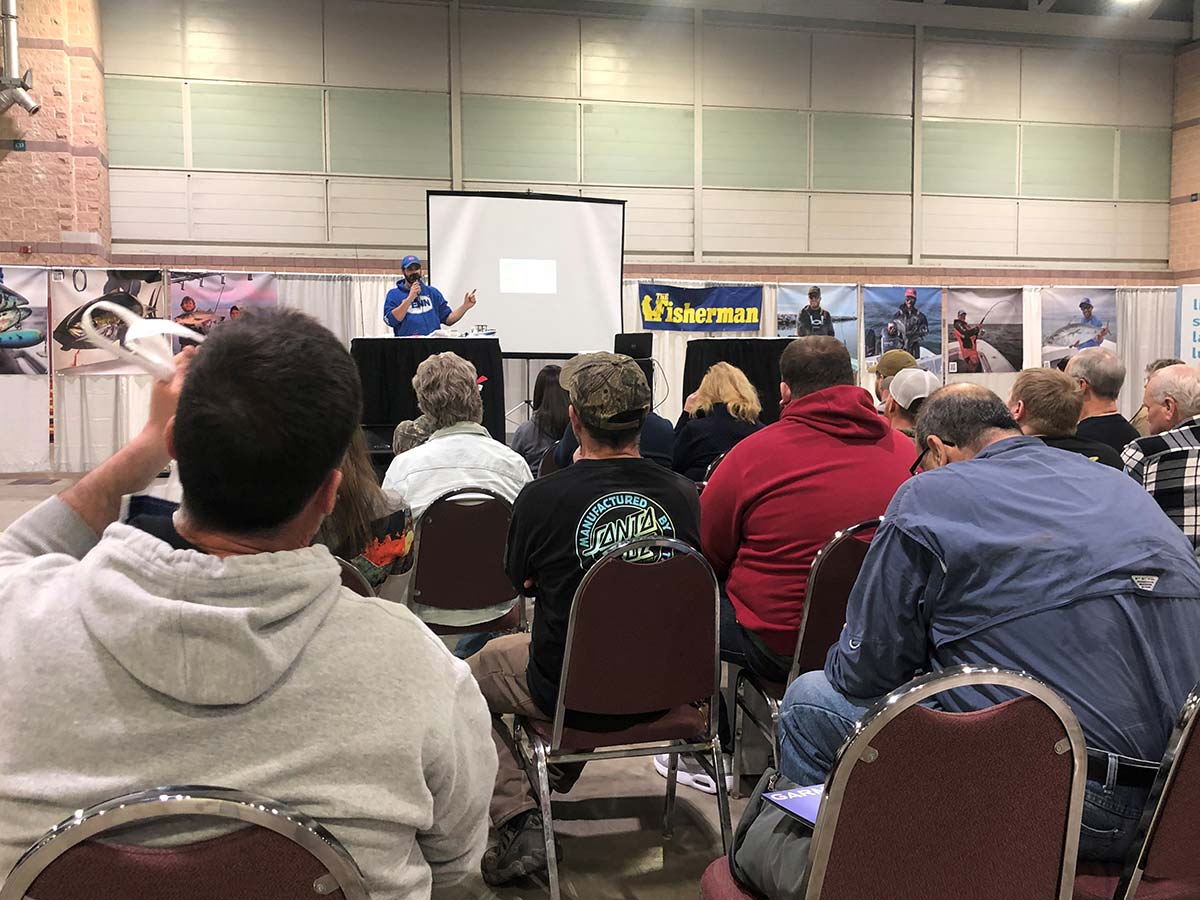
Back In Blackfish
Just as soon as I end my fall/winter fishing, I am already planning on my spring charter trips. I have already spoken to the captains, and I have all the dates that I want to fish. Now I am texting my crew to fill each trip. A six-man charter requires five guys plus me, and I have a short list of guys who I invite on every trip. Then I have another list of guys that I like to fish with, but they are not as available as my regulars. Once I fill the other five, we’re ready to fish.
We all, however, follow the same rules. Simple things, such as do not call or text the charter master to discuss the weather. The charter master will get a call from the captain the evening before to simply say the time to be at the boat, or the trip is cancelled. People who text or call me about the weather? Well, their invitations may become lost in the mail. I often have back-to-back trips, coupled with working a full-time job, I simply don’t care to discuss the weather four days in advance when it will surely change.
| TAUTOG CHARTERS |
| As a reminder, tautog regulations in New York coastal waters reopens April 1 and runs through April 30 (four fish at 15 inches), reopening August 1 to November 15 with a one fish bag, which goes to five fish as of November 16.
For Delaware toggers, it’s a four fish limit and 16-inch minimum size from January 1 through May 15, reopening again from July 1 through December 31. In New Jersey, tautog returns with a four fish bag limit and 15-inch minimum size from April 1 through April 30, with one fish bag (15 inches) from August 1 through November 15, and a five fish bag limit (15 inches) from November 16 through December 31. Curious to know who’s sailing for tautog? Now’s the time to book those charters and reserve your spots along the rail of your favorite head boat; turn to The Fisherman’s Report Section in the middle of this edition for a rundown from north to south on the captains and crews available to put you back in blackfish this spring. |
Now that New Jersey winter tautog has come to a close, it is the time to make connections and schedule charter trips. If you want to charter your own date, maybe attend the upcoming Saltwater Fishing Expo in Edison to connect with captains! Bring your calendar, pick a date that works and give a deposit. Start building your crew and in time you can schedule more and more charter trips.
Needless to say, you’ll ultimately have to pick the dates that the boat is available, so you might need to take a vacation day or two. I am sure you will find five others who want to go. Get a deposit from them if you do not know them personally. If one of your guests are a no show (regardless of reason) the Charter Master is responsible to pay the charter fare in total. I always keep an extra few hundred in case someone bails. Don’t worry, I will get the cash; or they are off of the list. If you have a core group of guys for every trip that are bulletproof, it makes filling a boat much easier. It’s a win-win situation, for everyone.
Head boats are also an excellent way to get on the tog grounds and meet fellow tog nuts who are willing to fish this time of year. If I invite you on my trips, and you invite me on your trips we can start a mutually beneficial friendship. No need to commit in advance either, just show up in the morning and walk on. Some boats are by reservation only. Once again, make your commitment and go! If you wait for the perfect weather day, you will only fish one day a year. If the wind is less than 20 knots take your Dramamine, put on your relief band and go!
Some of the best toggers I’ve ever seen were regulars on head boats. If you keep an eye on these sharpies, you might get some great ideas on proper rigging, gear and techniques. Fishing on a head boat is definitely a less expensive way to get out there, so don’t discount them as a great way to fish the tog grounds in a very comfortable way.


